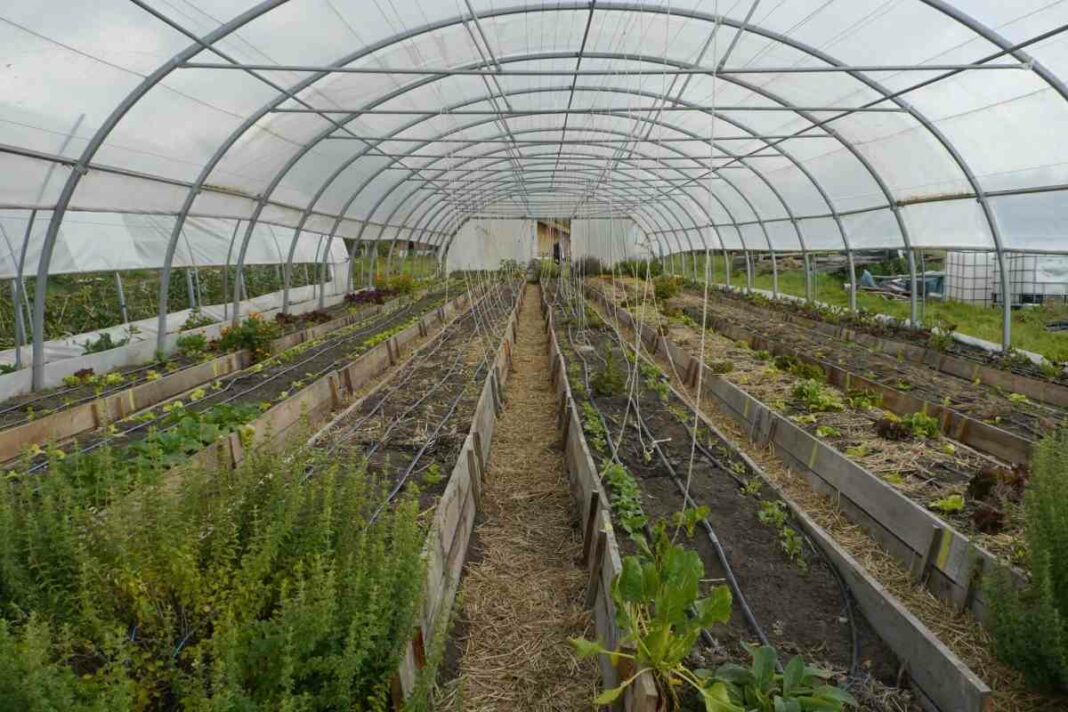Growing greenhouse herbs is a rewarding and enjoyable endeavor for both seasoned gardeners and beginners. A greenhouse provides the perfect environment for nurturing a wide range of herbs, allowing you to enjoy fresh flavors and fragrances all year round. This comprehensive guide will walk you through the steps to successfully grow herbs in a greenhouse, from choosing the right greenhouse and preparing the space to select, planting, and caring for your herbs.
How to Choose the Right Greenhouse?
- Size: Consider the space available in your garden and your specific needs. A smaller greenhouse may be suitable for growing a few herbs, while a larger one will allow for a wider variety of plants and provide more room for growth.
- Materials: Greenhouses can be made from various materials, including glass, polycarbonate, and plastic film. Glass greenhouses provide better light transmission and insulation, while polycarbonate and plastic film greenhouses are more affordable and easier to install.
- Ventilation: Proper ventilation is essential for maintaining the ideal temperature and humidity levels in your greenhouse. Choose a greenhouse with vents, doors, or windows that can be opened to promote air circulation.
How to Prepare Your Greenhouse Space?
- Location: Position your greenhouse in a spot that receives plenty of sunlight throughout the day. Herbs require at least 6 hours of direct sunlight daily to thrive.
- Flooring: Choose a durable and permeable flooring material, such as gravel or concrete pavers, which will allow for proper drainage and easy cleaning.
- Shelving and Growing Spaces: Install shelves or benches to maximize your growing space. Consider using raised beds or containers for planting your herbs, which will allow for better soil control and drainage.
- Temperature and Humidity: Monitor and maintain the temperature and humidity in your greenhouse to create optimal growing conditions for your herbs. Most herbs thrive in temperatures between 60-75°F (15-24°C) and relative humidity of 50-70%.
Selecting and Planting Your Greenhouse Herbs
- Choose your herbs: Select a variety of herbs that suit your taste preferences and your greenhouse’s growing conditions. Popular greenhouse herbs include basil, parsley, cilantro, chives, mint, oregano, thyme, and rosemary.
- Start seeds or buy seedlings: You can either start your herbs from seeds or purchase seedlings from a nursery. Starting from seeds is more cost-effective, but seedlings will give you a head start on the growing process.
- Planting: Plant your herbs in well-draining, nutrient-rich soil. Space your herbs according to their mature size to ensure adequate airflow and prevent overcrowding. Use containers or raised beds to provide optimal drainage and prevent soil-borne diseases.
How to Maintain Your Greenhouse Herbs?
- Watering: Water your herbs regularly, ensuring the soil remains consistently moist but not waterlogged. Overwatering can lead to root rot and other diseases.
- Fertilizing: Feed your herbs with a balanced, organic fertilizer every 4-6 weeks to promote healthy growth. Avoid over-fertilizing, as this can lead to excessive leaf growth and reduced flavor.
- Pruning and harvesting: Regularly prune your herbs to encourage bushy growth and prevent them from becoming leggy. Harvest your herbs by snipping the leaves or stems as needed, leaving at least two-thirds of the plant intact to allow for regrowth.
- Pest and disease control: Regularly inspect your herbs for signs of pests and diseases. Use organic pest control methods, such as introducing beneficial insects or applying organic pesticides, to manage any infestations. Remove and dispose of any diseased plants to prevent the spread of pathogens.
- Pollination: Some herbs may require manual pollination to produce seeds, especially if you plan to harvest seeds for future planting. Use a small brush or your fingertip to gently transfer pollen from one flower to another.
- Overwintering: Some herbs, like rosemary and thyme, are perennial and can be overwintered in the greenhouse. Maintain consistent temperature and humidity levels, and reduce watering during the winter months to encourage dormancy.
Conclusion
Growing herbs in a greenhouse is a rewarding and practical way to enjoy fresh, homegrown flavors all year round. By carefully selecting and planting a variety of herbs, maintaining optimal growing conditions, and providing proper care, you can create a thriving, fragrant oasis in your own backyard. Whether you’re a seasoned gardener or a beginner, cultivating herbs in a greenhouse offers numerous benefits, from enhancing your culinary creations to providing a relaxing and enjoyable pastime. So why wait? Start planning your greenhouse herb garden today and experience the satisfaction and joy of nurturing your own herbs from seed to harvest.
You can also check:
